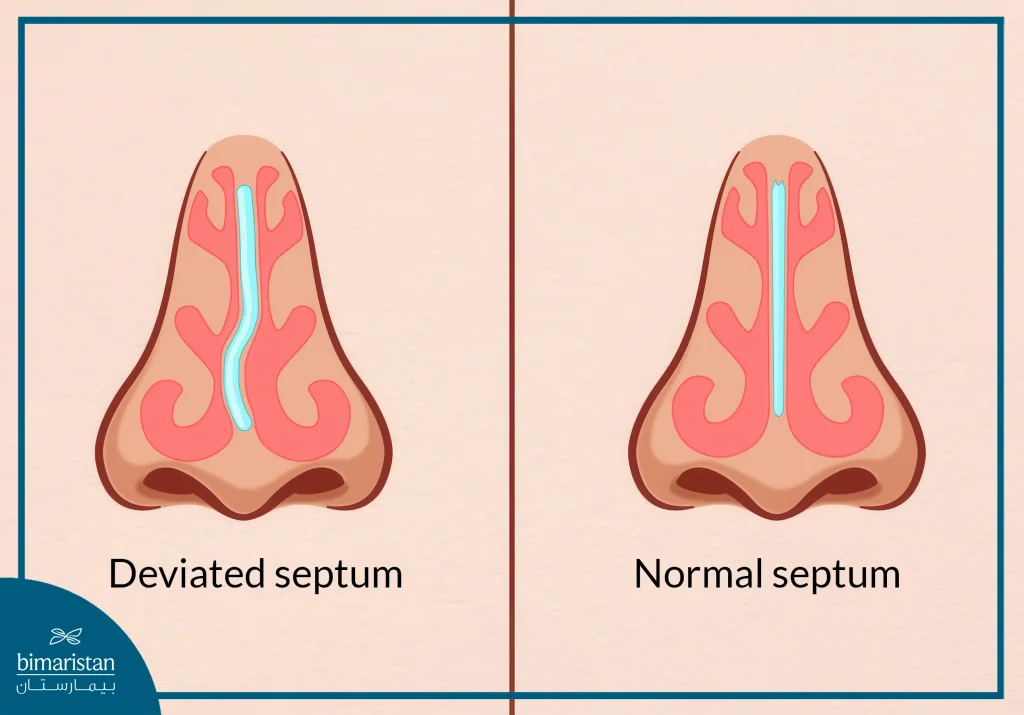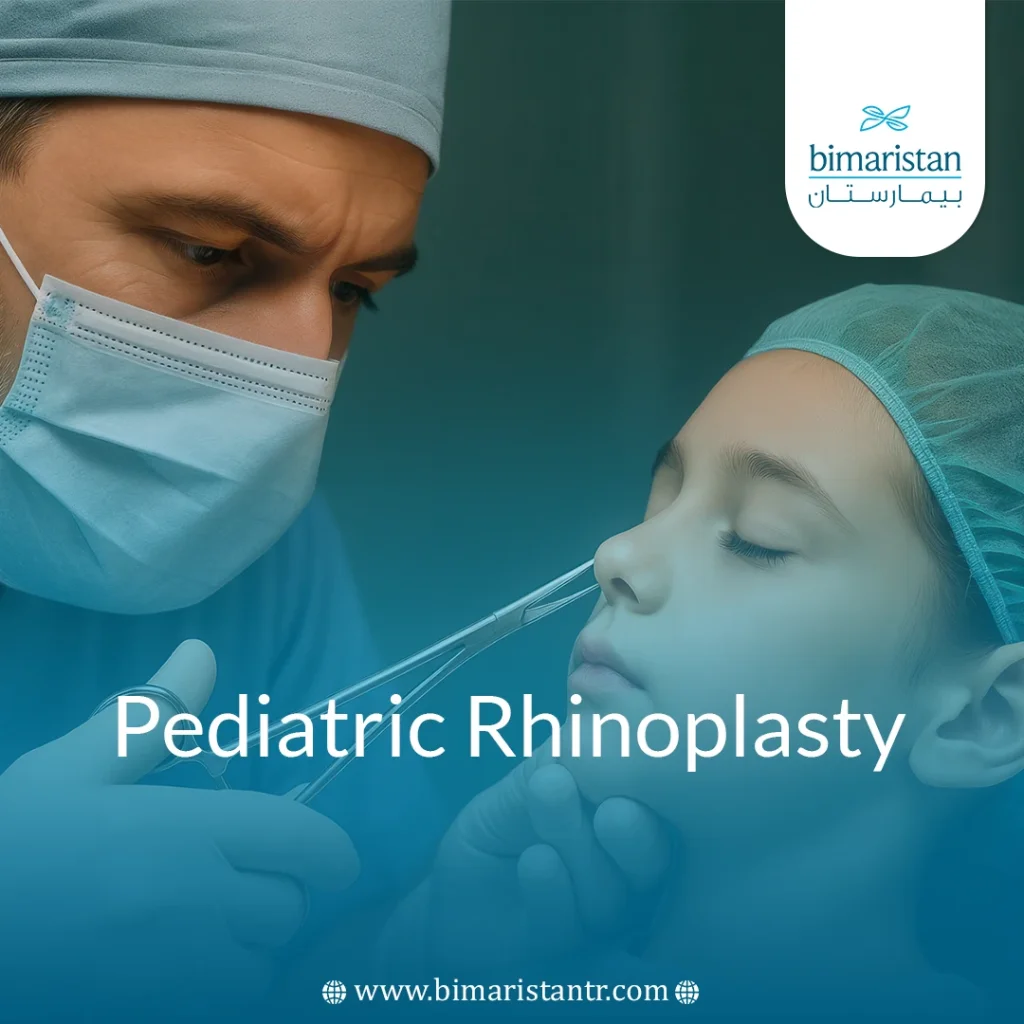Pediatric rhinoplasty plays a vital role in a child’s facial development, influencing both appearance and respiratory health, as nasal problems can hinder breathing and overall well-being. Some children may have congenital nasal deformities, such as a curved nasal bridge, or sustain trauma that alters nasal structure and function. In such cases, pediatric rhinoplasty goes beyond aesthetics, as it restores nasal function, enhances airflow, and corrects structural issues. Unlike adult procedures, pediatric rhinoplasty requires tailored medical expertise to ensure safe, precise, and age-appropriate outcomes.
What is pediatric rhinoplasty?
Pediatric rhinoplasty is a procedure that addresses both aesthetic and functional concerns, such as nasal size, bridge width, deviated septum, and congenital conditions that affect nasal shape or function, ranging from respiratory difficulties to deformities caused by trauma.
Pediatric rhinoplasty differs from adult procedures in both timing and complexity. It is typically postponed until the nose has matured, due to ongoing cartilage and bone growth. This makes pediatric rhinoplasty more demanding, requiring expert surgical skill to maintain nasal function and structure. It is often medically necessary in cases involving congenital anomalies, such as a cleft nose, a deviated septum impacting breathing, or trauma that alters nasal form or function. In such situations, the procedure serves not only cosmetic goals but also therapeutic ones, improving the child’s overall health and quality of life.
Common causes of pediatric rhinoplasty
Parents may seek to correct their child’s nose for various medical or cosmetic reasons, including:
- Congenital malformations: Some children are born with abnormalities such as cleft lip or craniofacial developmental disorders, which may cause blocked nasal passages and poor nasal structure. These conditions require early surgical intervention to improve breathing and speech.
- Trauma and fractures: Nasal injuries resulting from accidents or falls may lead to fractures or deformities of the nasal bones and cartilage, altering the nose’s shape and impacting breathing, and may necessitate reconstruction or surgical correction.
- Chronic breathing issues: A deviated septum, a tilt in the wall between the nostrils, may be congenital or a result of an injury. This deviation causes congestion, difficulty breathing, or frequent bleeding, and is usually treated with septoplasty surgery.
- Cosmetic and psychological reasons: Children may seek to correct the shape of their noses for both cosmetic and psychological reasons. An asymmetrical or prominent nose, such as one with a protruding bridge or larger size, can negatively impact their self-esteem. In these cases, pediatric rhinoplasty can enhance their appearance and provide crucial psychosocial support.
The right age for pediatric rhinoplasty
The ideal timing for pediatric rhinoplasty varies depending on the reason, whether cosmetic or functional. Doctors usually recommend postponing cosmetic surgery until the face is fully developed, usually after the age of 5-6 years or following puberty, as nasal growth extends into late adolescence. However, functional or corrective surgery may be performed early if the child is physically and psychologically mature and able to understand the results.
In urgent situations, such as congenital malformations or severe breathing difficulties, early intervention is preferred to improve nasal function and enhance the child’s quality of life. Ensuring full facial development is crucial for maintaining long-term surgical results, as premature intervention may lead to post-growth changes that require revision surgery. Ultimately, the decision is based on the child’s unique condition and clinical needs.
Types of pediatric rhinoplasty
This simplified table focuses only on the brief description, advantages, and disadvantages of each type of pediatric rhinoplasty.
| Type of surgery (Arabic/English) | Short description | Advantages | Disadvantages |
|---|---|---|---|
| Septorhinoplasty | Double surgery treats a deviated septum and improves nasal appearance | Breathing and shape improvements in one procedure, effective for severe deviation cases | Complex surgery, requiring a high level of expertise |
| Open Rhinoplasty | Small external incision under the nose for a full view of bone and cartilage, suitable for complex deformities | High precision adjustment, ideal for complex cases and severe deformities | Smaller scar, longer recovery time |
| Closed Rhinoplasty | Invisible internal notches, used for minor and moderate adjustments | No external scars, shorter recovery time | Limited visibility, not suitable for large deformations or fine corrections |
| Congenital Defect Surgery | Correcting abnormalities such as a cleft nose with a cleft lip or facial growth disorders | Improves breathing, appearance, and supports early speech | Requires long-term planning, you may need to undergo a revision surgery as you grow |
| Minimally Invasive Procedures | Minor adjustments or cosmetic fillers, or minor in-office intervention | No need for anesthesia, quick recovery, and suitable for minor cases | Temporary results, not ideal for structural deformities or functional issues |

Preoperative preparations and medical evaluation
The role of the pediatrician and otolaryngologist
Preparation begins with coordination between the pediatrician and the appropriate surgeon or otolaryngologist. The pediatrician assesses the child’s general condition and growth, while the otolaryngologist performs a thorough evaluation of the nasal anatomy and respiratory function to determine the appropriateness of the surgery.
Radiology and breathing tests
Imaging tests, such as a CT Scan or MRI, are required to study the bony and cartilaginous structure of the nose. Respiratory function tests or airflow measurements may be performed to assess any obstruction.
Discussing goals and risks with parents
The surgeon holds a detailed session with the parents and the child (if applicable) to discuss the goals of the procedure, realistic expectations, and potential risks and complications, while also emphasizing the importance of follow-up.
Risks and possible complications of pediatric rhinoplasty
Risks and complications that may accompany pediatric rhinoplasty include the following:
- Bleeding during or after the procedure
- Temporary swelling in the nose or around the eyes
- Localized infections at the surgical site
- Asymmetrical nose shape after surgery
- Visible scar formation (especially in open surgery)
- Respiratory issues, if internal structures are not adequately treated
- Poor wound healing in some cases
- Temporary numbness in the skin of the nose or upper lip
- The need for an additional corrective procedure later (revision surgery)
- Skin shrinkage or internal fibrosis affecting the final look
- Negative reaction to general anesthesia
Recovery and care after pediatric rhinoplasty
Typical recovery time
The initial recovery time usually lasts two to four weeks. Most of the swelling typically disappears within the first month, while full recovery of tissue and cartilage can take 6 months to a year.
How to minimize pain or swelling
It is recommended to use cold compresses and elevate the head during sleep while taking analgesic and anti-inflammatory medications as prescribed by your doctor.
When is it safe for the child to return to school or participate in activities?
The child can return to school after about a week to 10 days as sports and violent activities should be avoided for at least 4 to 6 weeks to protect the nose from trauma.
Expected results of pediatric rhinoplasty
Improved appearance, breathing, or both
The results vary depending on the type of surgery. Still, it often improves the appearance of the nose and breathing functions, especially when there is a deviated septum or congenital obstruction.
Positive psychological impact on the child and family
A good result can boost a child’s self-confidence, especially in school and social situations, and parents can feel relieved after achieving a safe and satisfactory result.
The importance of regular follow-up with your doctor to monitor the development of the condition
Regular follow-up visits after the procedure are essential to monitor the labrum, evaluate the development of the nose shape as the child grows, and to intervene promptly if complications arise.
In conclusion, pediatric rhinoplasty is a crucial procedure for addressing nasal deformities that impact both breathing and facial aesthetics. However, it is essential to weigh potential risks and complications and ensure proper timing for pediatric rhinoplasty. Careful planning and consistent medical follow-up are crucial in achieving optimal outcomes and ensuring the child’s well-being.
Sources:
- Children’s Healthcare of Atlanta. (n.d.). Rhinoplasty.
- Great Ormond Street Hospital. (n.d.). Open tip rhinoplasty for children with craniofacial disorders. Retrieved June 23, 2025
